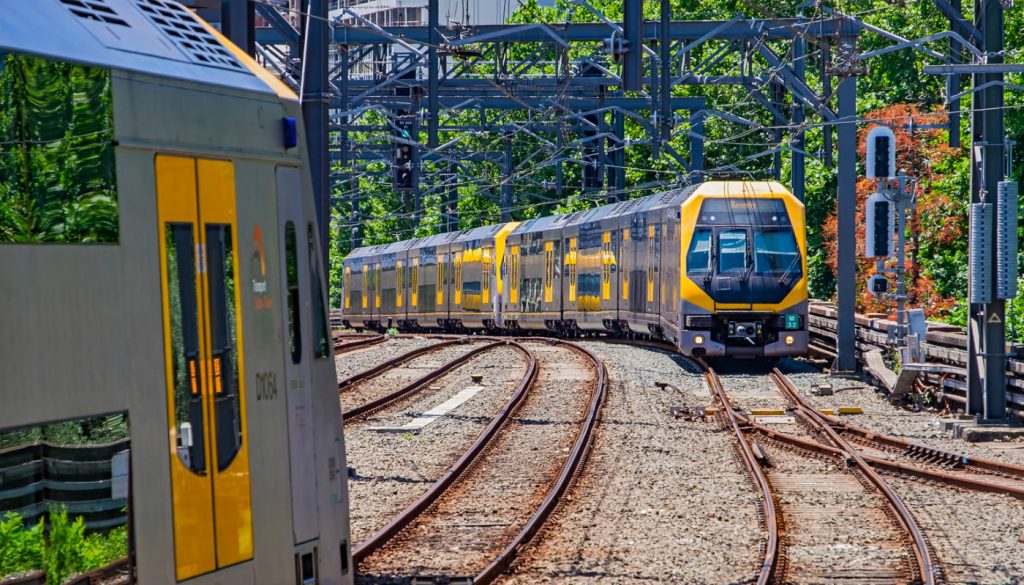When you think of engineering innovation, car parks and train tunnels don’t usually spring to mind. At least, that’s how one civil engineer felt until he was tasked with completing an integral part of a multi-billion-dollar transport project.
The Sydney Metro Northwest project is set to open for the public in the first half of 2019 with eight new railway stations and 4000 commuter car parking spaces. These additions are designed to service the 200,000 people expected to move to Sydney’s north west over the next decade.
It’s a massive undertaking, with more than $5 billion awarded in contracts. The project is divided into three separate stages: tunnels and station civils; surface and viaduct civils; and operations, trains and systems.
Thomas Miller, a senior geotechnical engineer at SMEC, recently finished work on the third act, which involved constructing the stations and precinct buildings, including the car parks and other supporting infrastructure.
Working on this project gave Miller an opportunity to gain some perspective on the many ways engineering innovation can influence people’s lives.
Necessity breeds creativity
Miller’s primary focus was Cherrybrook Station, one of the eight new railway stations being constructed as part of the project. The station precinct includes a four-level, 400-space car park directly next to the station structure.
This presented its own set of challenges. The car park is directly above the twin rail tunnels that had been constructed during an earlier contract stage. However, the tunnels weren’t explicitly designed to bear any loads from the car park.

Initially the geotechnical team explored ‘off-the-shelf’ solutions. One proposal was to borrow techniques from The Shard’s construction, which involved coating the pile sleeves with bitumen. However, that technique can be problematic and time consuming. Another option was to isolate the pile from the ground completely, but over certain lengths that becomes inefficient.
“We wanted to separate [the piles] that are in the vicinity of the tunnels from the ground so we wouldn’t risk imposing the load on the tunnels. There was also a conflicting desire from a structural perspective to have these piles close to the tunnels because that meant the car park structure would have a reduced span between the columns, which meant a more optimised design above ground,” Miller said.
These variables meant Miller and his team had to think critically and creatively about a solution that “ticked all the boxes”. What he and his team ended up doing was finding a way to support the load of the car park through a dual grout strategy.
“Even in such well-established fields, there’s still room for innovation, and we should be trying to pursue innovative solutions to the challenges we face.”
Holes were drilled from the surface down to the ground below the tunnels, within which steel casings slightly smaller than the holes were placed. The gaps were then filled with two different types of grout: first, a soft grout placed near the tunnels; then towards the top, a hard grout to provide lateral restraint. Below the tunnel, the pile is socketed into rock, which takes the axial load.
“That’s where the novelty came in. You have soft grout near the tunnel and hard grout near the surface to isolate it from the ground near the tunnel and prevent the load from going near the tunnel,” Miller said.
Outside exposure
Miller said he was surprised to be named one of create’s Most Innovative Engineers for 2017 for his work on Cherrybrook Station and the dual grout strategy.
The whole experience has been incredible, according to Miller, and being nominated for the Most Innovative Engineers Award gave him an opportunity to take a step back from the project and view it holistically.
“You do get caught up in the project, and you just get on with it. It’s nice to have external people see what you’ve done and recognise your work in that way.”
The nod has had roll-on effects for him both inside and outside SMEC.
“There’s been great internal recognition for this project, and I’ve been given opportunities to present this work at conferences and to clients,” Miller said.
“I was fortunate to also be nominated for the Bradfield Award, which I believe was a direct consequence of being named on the list.”
His alma mater, The University of Sydney, also invited him to become an adjunct lecturer with the School of Civil Engineering, where he lectures a few times each term.
Evaluating his own work in this way – and seeing the response from the engineering community – made him realise that innovation can come from anywhere.
“Normally, when I think of the most innovative engineers in Australia, I jump to biotechnology or medical research, or information technology advances” he said.
“Civil engineering is such a well-established field that it is not often thought of as being hugely innovative. It was an honour to be named on the list and to have recognised that, even in such well-established fields, there’s still room for innovation and we should be trying to pursue innovative solutions to the challenges we face.”
Thomas Miller is one of create‘s Most Innovative Engineers for 2017. To register your interest for the class of 2019, email innovativeengineers@mahlab.co
